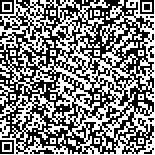| 摘要: |
| [摘要] 目的 观察全麻诱导前单次静脉输注右美托咪定对冠心病非心脏手术患者全麻诱导气管插管应激反应的影响。方法 择期气管内插管全身麻醉拟行上腹部外科手术冠心病患者60例,美国麻醉医师协会(ASA)Ⅱ或Ⅲ级,采用随机数字表法将其分为两组(n=30):对照组(C组)和右美托咪定组(D组)。D组患者于麻醉诱导前10 min静脉输注右美托咪定0.5 μg/kg,输注时间10 min。C组患者以同样方法输注等量0.9%氯化钠溶液。两组患者麻醉诱导方法相同。当患者脑电双频谱指数(BIS)≤45时进行气管内插管。于入室时(T0)、气管插管前1 min(T1)、气管插管时(T2)、气管插管后1、3、5 min(T3~5)记录患者平均动脉压(MAP)、心率(HR),同时采集颈内静脉血样本测定血浆去甲肾上腺素(NE)和肾上腺素(E)浓度。观察并记录心血管不良反应的发生情况。结果 与T0时比较,T1时两组MAP、HR明显降低(P<0.05),T2~5时C组MAP、HR、血浆NE和E浓度明显升高(P<0.05),D组上述指标值在以上时点相对平稳(P>0.05)。与C组比较,D组T1时刻MAP明显升高(P<0.05),T2~5时MAP、HR、血浆NE和E浓度明显降低(P<0.05),低血压、高血压、心动过速和心肌缺血的发生率明显降低(P<0.05),心动过缓发生率差异无统计学意义(P>0.05)。结论 诱导前单次静脉输注右美托咪定0.5 μg/kg可有效抑制冠心病非心脏手术患者气管插管的应激反应,还可降低心血管不良反应发生率。 |
| 关键词: 右美托咪定 气管插管 冠心病 全身麻醉 |
| DOI:10.3969/j.issn.1674-3806.2018.06.16 |
| 分类号:R 614 |
| 基金项目: |
|
| Effect of dexmedetomidine on intubation stress reactions under general anesthesia induction during noncardiac surgery in patients with coronary heart disease |
|
HE Qing-biao, WANG Yu-ming, HUANG Wei, et al.
|
|
Department of Anesthesiology, Armed Police Hospital of Guangdong, Guangzhou 510507, China
|
| Abstract: |
| [Abstract] Objective To evaluate the effect of dexmedetomidine on intubation stress reactions under general anesthesia induction during noncardiac surgery in patients with coronary heart disease. Methods Sixty ASA Ⅱ or Ⅲ patients with coronary heat disease were scheduled for elective upper abdominal surgery and were randomly divided into 2 groups: control group(n=30, group C) and dexmedetomidine group(n=30, group D). Dexmedetomidine 0.5 μg/kg was infused intravenously 10 min prior to anesthesia induction in group D, while the equal volume of normal saline was infused in group C. A1l the patients received the same anesthesia induction protocol. Tracheal intubation was performed when BIS value≤45. MAP, HR, NE and E were monitored and recorded at the time points of T0, T1(1 min before intubation), T2(immediately before intubation), and T3~5(1, 3 and 5 min after intubation). The adverse cardiovascular events were recorded during operation. Results Compared with those at T0, MAP and HR were significantly decreased in the two groups(P<0.05) and the levels of MAP, HR, NE and E were significantly higher in group C(P<0.05). No significant changes were found in the above indexes in group D(P>0.05). Compared with those in group C, MAP was significantly higher(P<0.05) and MAP, HR, NE and E were significantly decreased in group D at T1(P<0.05), and the incidence rates of hypotension, hypertension and tachyeardia myocardial ischemia were significantly decreased(P<0.05), and no significant changes were found in the incidence of bradyeardia between the two groups. Conclusion Dexmedetomidine(0.5 μg/kg) infused intravenously can effectively inhibit the stress reactions caused by tracheal intubation and reduce the adverse cardiovascular events. |
| Key words: Dexmedetomidine Tracheal intubation Coronary heart disease General anesthesia |

